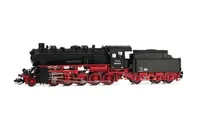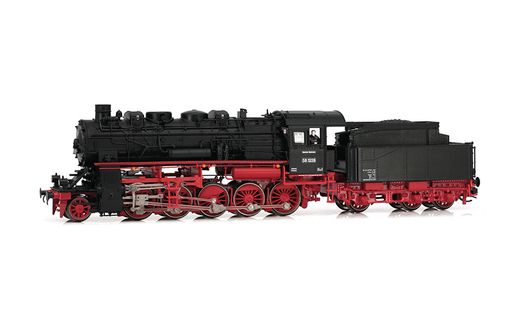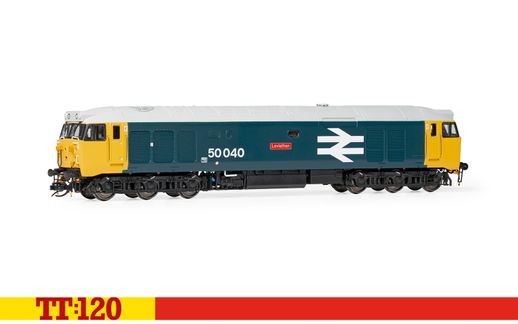HN9068 DR, steam locomotive with tender, 58 1111-2, 3-dome boiler, 3 headlights, ep. IV
Product Info
The first steam locomotives of the later class 58.10-40 were built in 1917 as the Prussian G 12 at the Henschel works. By 1924, almost 1,500 examples had been built by various locomotive factories for the Prussian, Baden, Württemberg and Saxon railroads. The approx. 1,550 hp locomotives formed the backbone of heavy freight traffic until the mid-1930s. After the
Second World War, steam locomotives of the class 58 were found in both German states.
The Deutsche Bundesbahn was able to dispense with these locomotives quite quickly and continued to use them until the end of the 1950s. and phased them out by the end of the 1950s. The Deutsche Reichsbahn, on the other hand, continued to rely on their service for a long time.
on their service for a long time. Some of these locomotives were rejuvenated in the sixties.
but they were also used in their original design until the mid-seventies.
The Bw Aue/Sachs. in particular became famous for the last service of the class 58 in 1976.
The new Arnold model
The class 58.10-40 is a long cherished wish of many TT railroaders. We at Arnold have always been aware of this. From the beginning it was clear that we wanted to show with a model of this legendary locomotive what is possible in TT gauge and that TT is not without reason the "gauge of the middle": A robust construction, easy maintenance, fine details and excellent driving characteristics do not have to be opposites!
And so development began with constructing the frame, locomotive boiler, tender running gear and housing from metal injection molding.
We also attached great importance to scale and provided the wheels of the middle three locomotive wheel sets with fine wheel flanges.
In order to achieve optimal driving characteristics even on old, uneven track, some wheel sets are spring-loaded. This ensures contact to the rail.
Many of the model's grab irons are made of overmolded steel wire, and a driver and a stoker figure in the driver's cab complete the shapely and powerful steam locomotive model.
The new Arnold model in highlights
- Frame, locomotive boiler, tender running gear and housing made of
metal injection molding
- Depending on the model version, the locomotive has a
three- or four-domed boiler, bell, coal box and gas
coal box attachment and gas tank on the rear end of the
tender
- Powerful five-pole engine with flywheel mass in the locomotive boiler
horizontal
- All wheel sets with finest spokes, some of them with fine
wheel flanges for a prototypical appearance
- Three locomotive wheel sets as well as the center tender wheel set have
sprung for optimal driving characteristics
- All lamps illuminated according to direction of travel and switchable in digital
switchable in digital operation
- Many extra details, where possible made of robust steel wire
steel wire
- The interior of the driver's cab and the front of the tender
were elaborately detailed
- All model versions also available with sound The
sound was specially developed by us for this model
- Couplings on locomotive and tender with
Coupling mounts according to NEM 355
- Close coupling between locomotive and tender
- Digital interface according to NEM 662 ("Next 18")
- Analog version prepared for the installation of a
rectangular loudspeaker (15 x 11 mm)
- Minimum radius: 310 mm
- Length over buffers: 154 mm
- Weight: approx. 130 g
What's Inside
Recommended For You
Tech Specs
- Item Scale
- 1:120 Scale
- Finish
- Plastic
- Colour
- Black and red
- Wheel Configuration
- 1-E h3
- DCC Status
- Next 18 socket (NEM 662)
- Minimum Curve (mm)
- Tt scale: 310 mm
- Flywheel Fitted
- Yes
- Pantograph
- No
- Close Coupler
- No
- Metal Body
- No
- Interior Light
- No
- Lights
- Yes
- Sprung Buffers
- No
- Livery/Owner logo
- DR
- Region Flag
- East Germany
Detailed scale model. Not suitable for children under 14 years. Please refer to safety notes in enclosed instruction leaflet. Colours and contents may differ from those illustrated. Please retain these details and the address for future reference.








